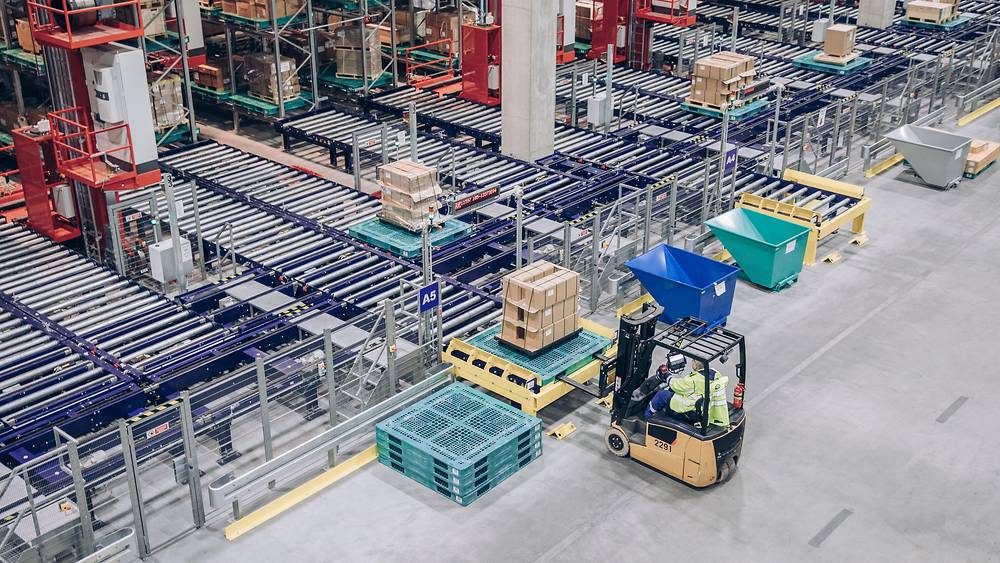Cargo news


Finnair Cargo's performance in 2019 by month
Worldwide insecurity is putting the global air cargo industry through an uncertain time but Finnair Cargo has seen good growth during the first half of 2019.
Outlook for the air cargo industry in 2019 has been, holistically speaking, a bit on the patchy side of things with the International Air Transport Association (IATA) reporting (Sep) that global air freight is down 1.4% year on year with US-China being particularly hard hit.
According to IATA, global economic activity and consumer confidence have been impacted by factors such as trade tensions which have led to a downward trend that started already in mid-2018. Freight capacity measured in available FTK has consistenty outstripped demand since the final quarter of 2018.
Despite the global outlook, Finnair Cargo saw steady growth for the first half of 2019. Long-haul capacity increased with two new A350 aircraft that entered the service in December 2018 and in February 2019. Meanwhile, new managing director, Mikko Tainio has his sights set on 1,000,000 kilos per day.
Finnair’s expansion in Asia continues to be very fruitful for Finnair Cargo, with strong market performance in China, Japan, Hong Kong and Southeastern Asia. Additionally, Finnair Cargo has seen a positive upswing in the Nordics, especially in Norway.
Finnair Cargo’s results in 2019 (click on the months to see full results)
- January saw scheduled cargo tonne kilometres (FTKs) increase by 17.2%* and revenue scheduled cargo tonne kilometres increase by 25.9%. This was mostly down to strong positive cargo market development in Japan and Western Europe, along with Nordic markets.
- For February, available scheduled cargo tonne kilometres increased by 16.2% while revenue scheduled cargo tonne kilometres increased by 26.2% mostly driven by strong positive cargo market development in Japan and Western Europe.
- In March, available scheduled cargo tonne kilometres increased by 18.4% with revenue scheduled cargo tonne kilometres increasing by 19.6%. Growth was mostly driven by the strong positive cargo market development in Japan and the Nordic countries.
- For April, there was a 27.0% increase in the available scheduled cargo tonne kilometres and revenue scheduled cargo tonne kilometres increased by 15.3% mostly driven by strong performances from Norway, Hong Kong and Southeast Asia.
- In May, available scheduled cargo tonne kilometres increased by 20.5% and revenue scheduled cargo tonne kilometres increased by 16.8% mostly driven by the positive cargo market development in Norway and United States.
- June saw scheduled cargo tonne kilometres increase by 15.4%. Revenue scheduled cargo tonne kilometres increased by 9.0% mostly driven by the positive cargo market development in Scandinavia and Finland.
- In July available scheduled cargo tonne kilometres increased by 15.1%. Revenue scheduled cargo tonne kilometres increased by 4.2%. The weak global cargo market was evident in July’s cargo performance.
- In August available scheduled cargo tonne kilometres increased by 13.1%. Revenue scheduled cargo tonne kilometres increased by 10.0%. Global uncertainty in world trade has reflected on the freight market and has generally lowered expectations, especially for cargo departing from Asia.
- September saw available scheduled cargo tonne kilometres increase by 13.7%, while revenue scheduled cargo tonne kilometres increased by 11.4%. Global uncertainty in world trade continued to press global air freight market in September, and market softness and yield pressures were especially visible in Finnair’s cargo markets in Asia. Finnair’s long-haul capacity increased year-on-year with three new A350 aircraft that entered the service after the comparison period.
*The performance comparison is made on a year-on-year (yoy) basis.